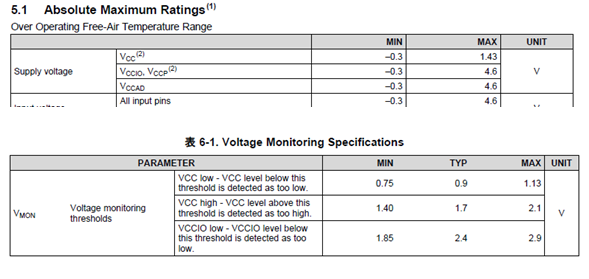Hi Team,
Why Vmon VCC-high (2.1V) is higher than Abusolute Maximum Rating Vcc (1.43V)?
Would you please explain if there is any specific reason / propose of it?
There is a footnote that Maximum-rated conditions for extended periods may affect device reliability.
We know TI highly recommend the use of an external voltage supervisor (such as TPS65381) to monitor all voltage rails. But we want to know why the device is designed like that to use correctly?
<From SPNS186C>
Thanks and Best regards,
Kuerbis


